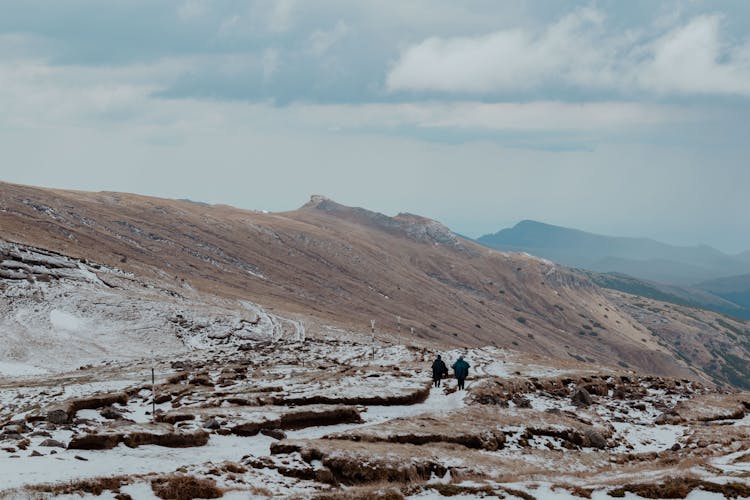All Categories
Featured
Key Safety Tips for Mountain Trails
TLDR Summary- 🗺️ Plan your hike and inform someone of your route.
- 💪 Know your physical limits before choosing a trail.
- 🌦️ Check the weather and be prepared for changes.
- 🎒 Always pack the 10 Essentials for emergencies.
- ☀️ Protect yourself from sun exposure.
- 📱 Be prepared for emergencies and carry a first aid kit.
Planning a hike effectively can make all the difference between an enjoyable adventure and a challenging ordeal. Whether you're trekking through the breathtaking landscapes of the Rockies or meandering along the serene paths of your local state park, preparation is vital. Start by mapping out your route and sharing it with someone who isn't hiking with you. This way, if anything goes amiss, there will be someone aware of your whereabouts. Your itinerary should include the trail name, expected return time, and any possible detours you may take. This precaution is particularly important for remote locations where help may not arrive quickly, should you require it. As noted in Happy Trails: Pro Tips for Hiking Safety, communication is crucial for outdoor endeavors.
Moreover, knowing your physical limits is essential. Trails come in a variety of difficulties, from easy strolls to strenuous climbs. It is important to honestly assess your physical condition and choose trails that match your capabilities. Ignoring this can lead to overestimation of your stamina and skill, placing you at unnecessary risk. A day hiking the serene paths in the Rocky Mountain National Park can quickly transform into a grueling experience if you select a path beyond your abilities.
Furthermore, understanding the importance of weather preparation cannot be overstated. Weather can change unexpectedly in the mountains, and what starts as a sunny day could develop into storms. Checking the weather forecast before heading out can be a lifesaver, as can consulting park rangers for local insights about possible hazards. If they indicate the chance of thunderstorms, steer clear of high and exposed areas during those conditions. Your safety is prioritized when you prepare to face the elements.
Another key aspect of hiking safely is ensuring you carry the appropriate supplies. The 10 Essentials are crucial for handling emergencies that may arise during your hike. These essentials include a first aid kit, navigation tools (like a compass and map), sun protection items, insulation layers, illumination (such as a flashlight), fire starters, a repair kit, nutrition (snacks), hydration (water bottles), and emergency shelter—these items make your outing safer and more enjoyable. Without these provisions, even minor challenges could become daunting hurdles in the backcountry.
As for sun protection, no hiker should underestimate the power of the sun. Wearing sunscreen, sunglasses, and hats can shield you from harmful UV rays. Aim to hike in the cooler hours of the day when the sun is at its peak intensity—this can significantly reduce the risk of heat exhaustion or sunburn. Staying hydrated is equally essential. Dehydration can creep up on you, and maintaining consistent water intake keeps your body functioning optimally during your outdoor adventures.
When it comes to safety on the trail, remaining vigilant is the order of the day. Straying from protected routes can lead to dangerous situations, such as slipping on rugged terrain or falling near steep cliffs. When encountering water sources, exercise caution around rapid currents, which can catch even seasoned hikers by surprise. As you navigate the wilderness, being aware of potential insect bites and utilizing repellents can also give you peace of mind as you trek through nature.
Preparation for emergencies is an integral part of your hiking safety strategy. Always carry a fully charged cell phone with you. Familiarize yourself with the device so you can use it effectively in urgent situations. In tandem with this, leave a detailed plan with a reliable friend or family member who remains at home—this is an excellent form of safety assurance in case help is needed.
Lastly, understand that injuries can happen even to the most prepared individuals. Carrying a first aid kit is vital, as is having knowledge of basic first aid techniques. Common injuries, such as snake bites, necessitate being cautious about your surroundings and wearing protective clothing. A little prudence can go a long way in ensuring you and your companions return home safely.
There are countless beautiful trails to explore. To help you navigate these stunning landscapes, consider looking into maps such as the Great Smoky Mountains National Park Map, which offers detailed insights into trail routes and other essential waypoints. Whether you're taking on the rolling terrains of the White Mountains or enjoying the picturesque scenery of the Rockies, the right tools will enhance your hiking experience.
By integrating these safety protocols into your hiking routine, you'll be well-equipped to enjoy the great outdoors without undue stress. Whether seeking solace in nature or exercising within magnificent mountainous landscapes, your well-being remains paramount. Embrace the thrill of exploration, be vigilant, and let your outdoor excursions become memorable and safe adventures that you will cherish for years to come!
Key Takeaways
- ⚠️ Always plan ahead before your hike.
- 🧗♂️ Assess your physical abilities to match hiking trails.
- 🌩️ Stay informed about current weather conditions.
- 🧰 Pack the 10 Essentials for unforeseen circumstances.
- 💧 Keep hydrated and protect yourself from sunburn.
- 🚨 Be ready for injuries and have a first aid kit at hand.

Latest Posts
Mastering the Art of Keeping Bread Fresh
Unplugging Your Way to Enhanced Well-being
Know Your Credit: A Detailed Guide